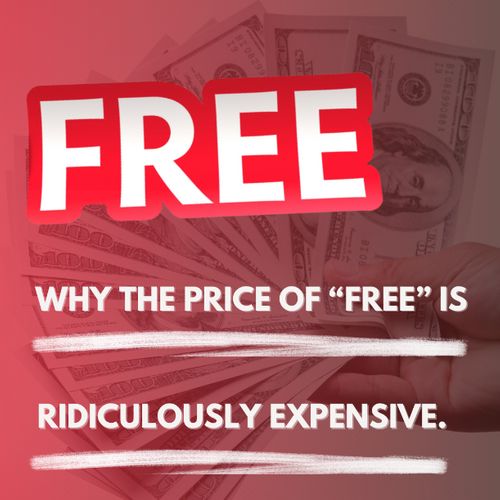Reasons Why the Price of “Free” is Ridiculously Expensive.
Feb 10, 2023 · 3 mins read
0
Share
[Part 1]
It feels great to get something for free. People can't seem to resist the allure of something given away for free. Even if they don't want it, they convince themselves that it will come in handy later. It's a "take advantage of the freebies before they're gone" mentality.
Save
Share
Free seems so harmless that most don’t even think twice before grabbing the offer. As it turns out, free is not just another price, it’s an emotional HOT button. It is irrational to buy two of a product we wouldn't have initially picked at all just to receive a 3rd one for free.
Save
Share
Why we can’t seem to avoid “FREE”?
According to Dan Ariely, behavioral economist and author of Predictably Irrational, humans tend to avoid losses whenever possible, because we perceive losses to be more powerful than equal gains.
Save
Share
Most transactions have an upside and a downside, but when something is offered for "FREE" people forgot the downside. "Free" gives such an emotional charge that people perceive whatever is being offered as immensely more valuable than it really is.
Save
Share
The real value of FREE is tied to this fear of loss. There’s no visible downside when they choose a free item. So they grab the opportunity with both hands. It’s also called the “Zero price effect.”
Save
Share
What is the real cost of “FREE”?
As a general rule, most of us refuse to pay for apps. We usually look for a free alternative. In Q1 2021, Google Play generated $36.7 billion in sales, while the Apple App Store generated $31.8 billion. Using only in-app purchases.
Save
Share
They just press our hot emotional button by writing “FREE APP” and that’s it, most of us download it without even thinking twice about the downsides that free brings with it. The actual cost of the app is paid in attention, personal data, or money later.

Save
Share
Advertisers recognize that the majority of people are willing to trade their time and attention for free services and goods on their app. Exposing our attention to hundreds of ads increases our odds of making purchases on their platform. The irony is people perceive this as free.
Save
Share
How to avoid the trap of “FREE”?
Be aware that if you see a sign that says "free" there is a good likelihood that someone may try to take advantage of you in some way.
Pose a question to yourself. Do I actually require this free item?
Usually, the answer will be NO.
Save
Share
The second question you should ask yourself is:
What are the hidden costs? or What are the downsides?
People don't consider the cons when something is supplied for free. Actively seeking out the negatives will broaden your perspective and help you make better decisions.
Save
Share
0
